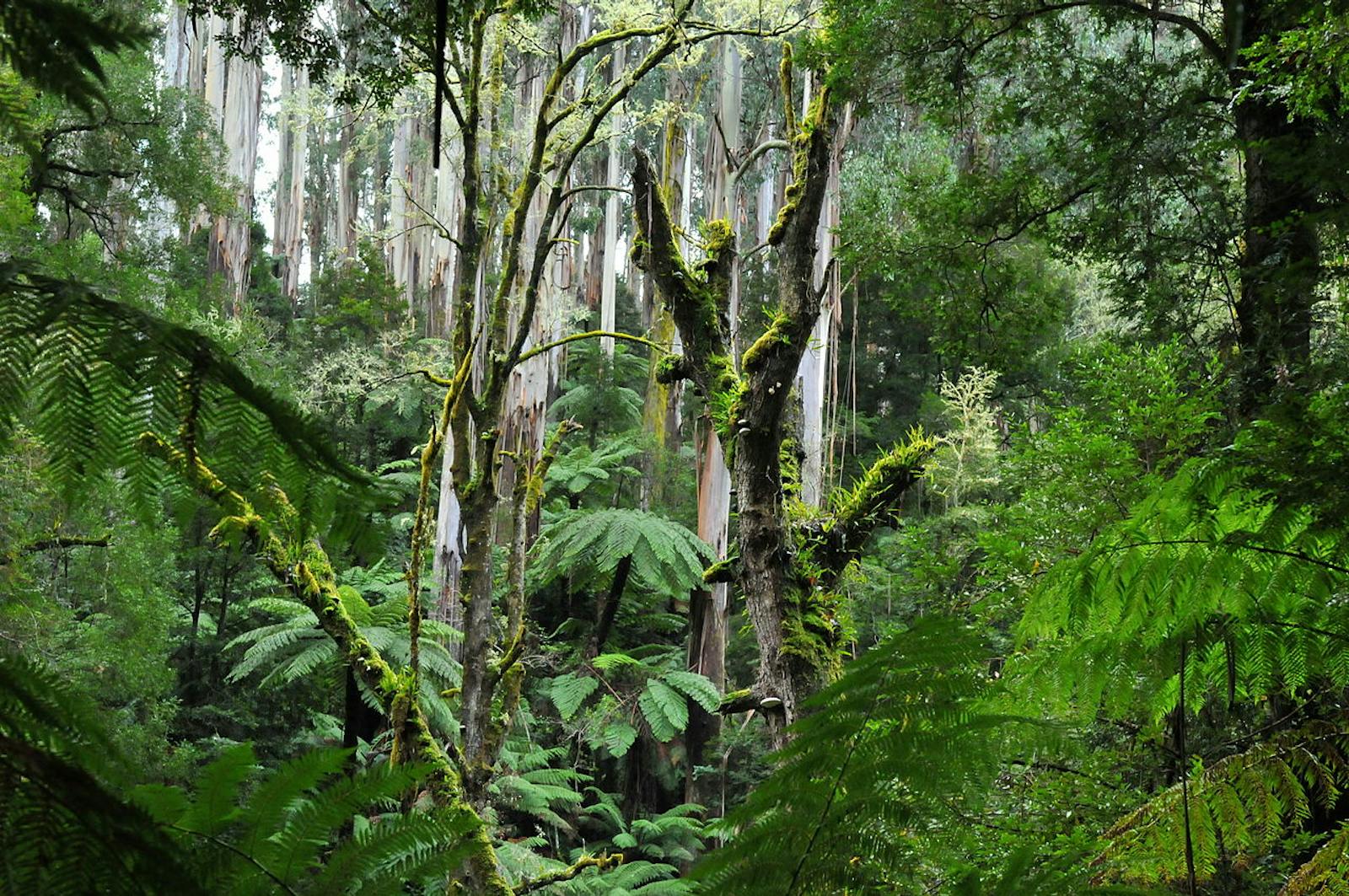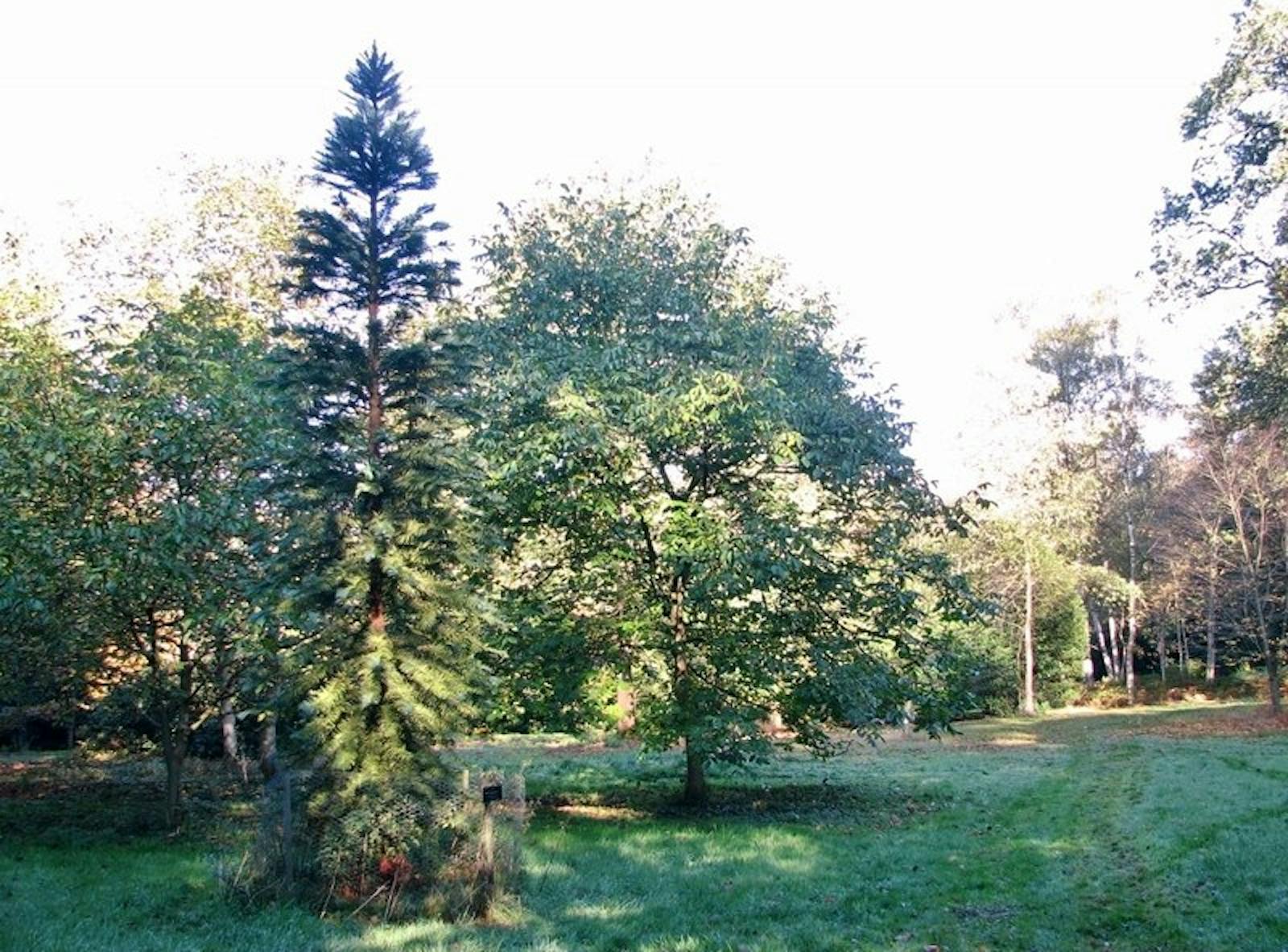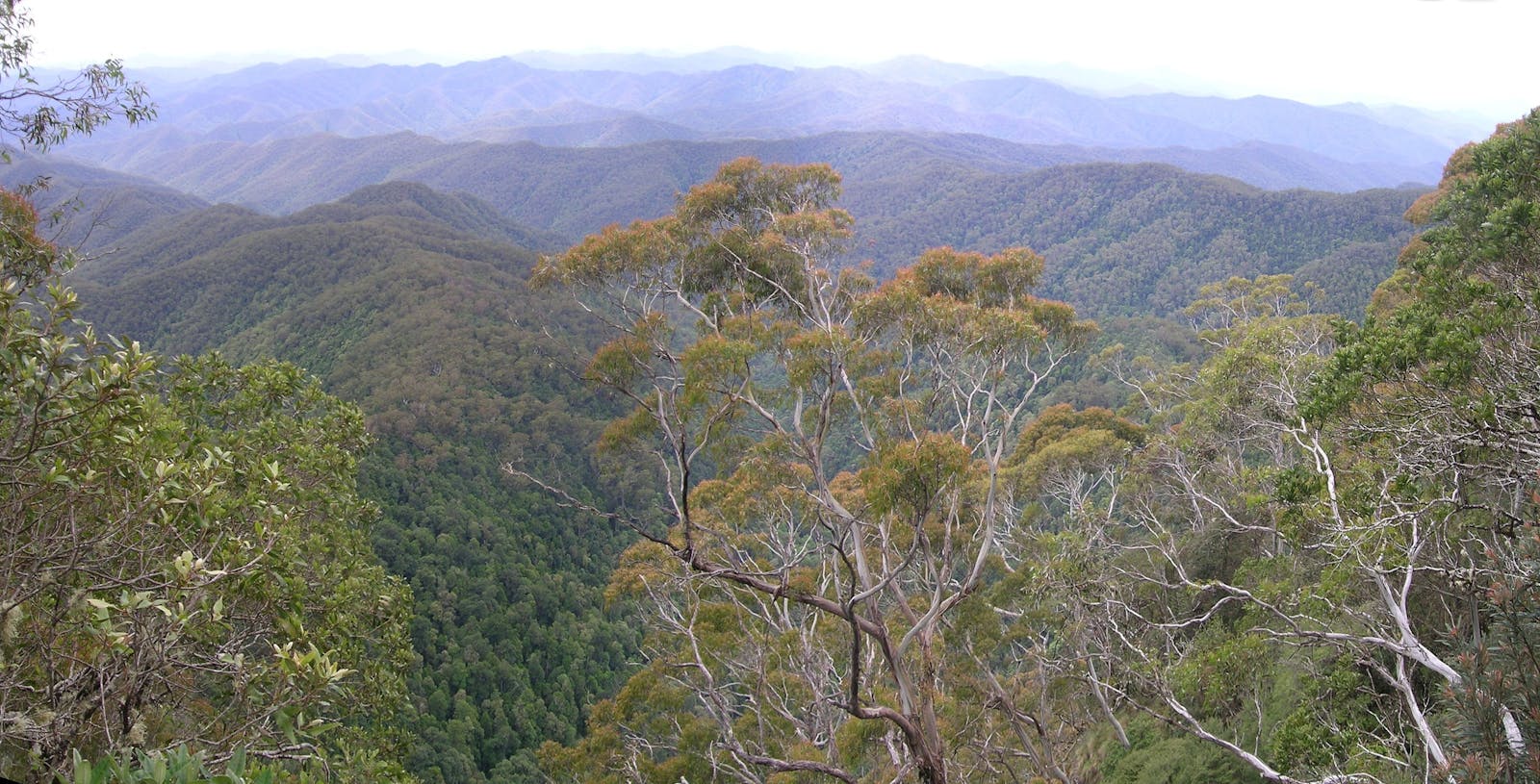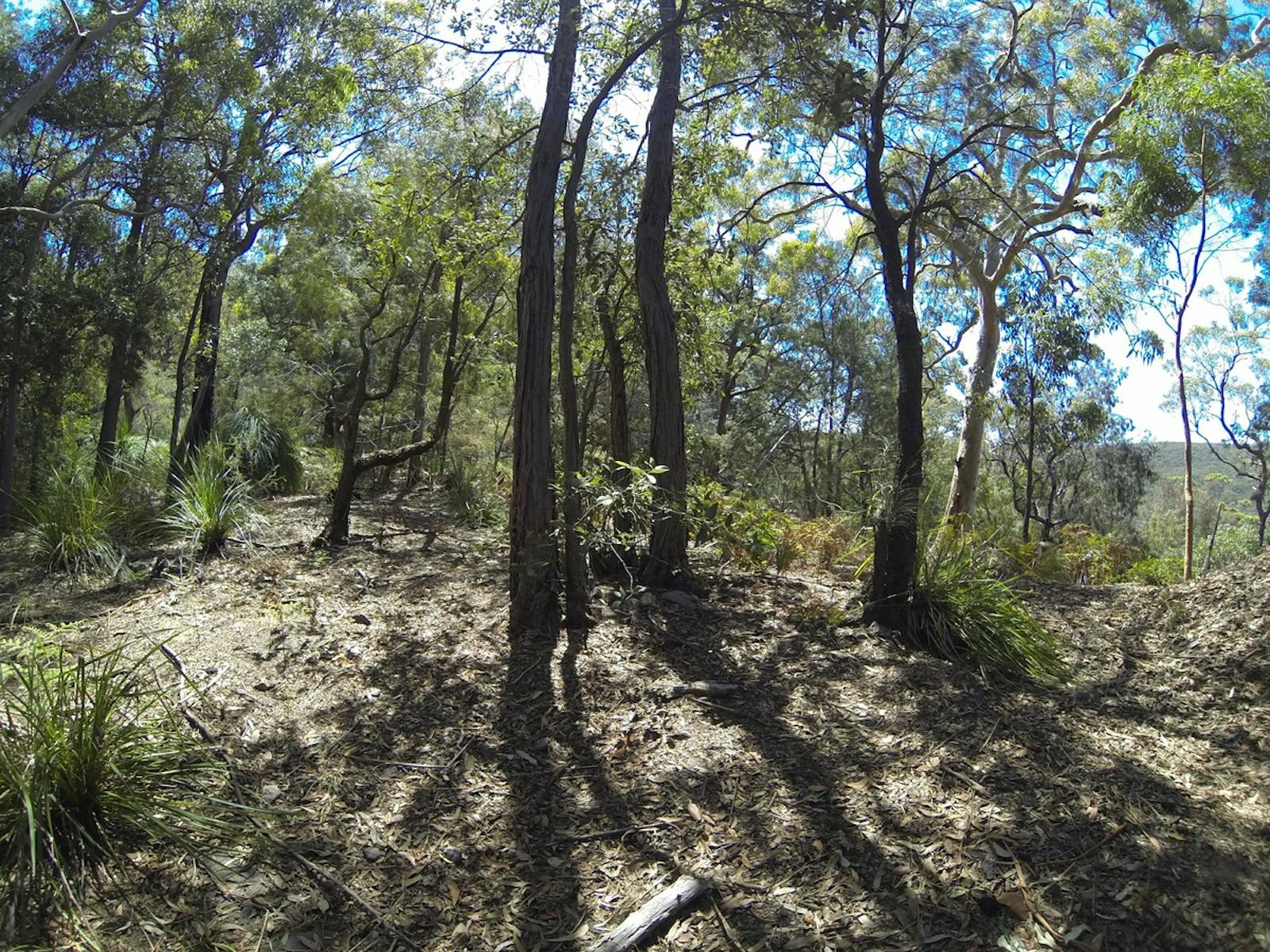Eastern Australian Temperate Forests
The ecoregion’s land area is provided in units of 1,000 hectares. The conservation target is the Global Safety Net (GSN1) area for the given ecoregion. The protection level indicates the percentage of the GSN goal that is currently protected on a scale of 0-10. N/A means data is not available at this time.
Bioregion: East Australian Temperate Forests & Mountain Shrublands (AU3)
Realm: Australasia
Ecoregion Size (1000 ha):
29,602
Ecoregion ID:
168
Conservation Target:
37%
Protection Level:
5
States: Australia
The coastal plains, mountains, and tablelands of the southeast coast of Australia support a variety of forests, from subtropical rainforest, warm and cool temperate rainforests, and dry subtropical forests to tall, wet Eucalypt forests. This wetter coastal ecoregion has acted as refuge for wet forest species for millions of years and many endemic and relictual species occur here, such as the ancient Wollemi pine (Wollemia nobilis). The extraordinary mimicking calls of the superb lyrebird (Menura novaehollandiae) are iconic to these forests.
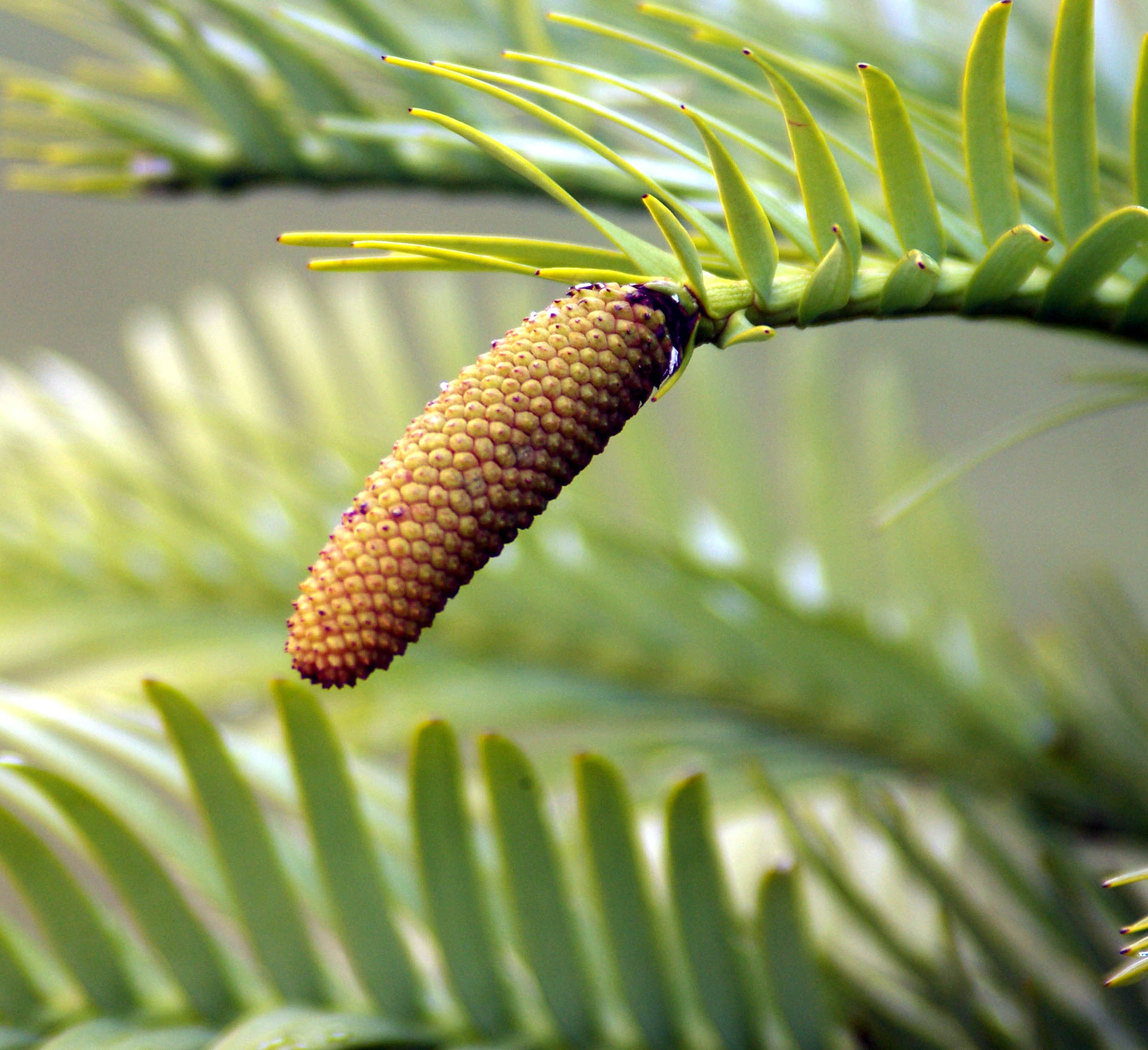
The flagship species of the Eastern Australian Temperate Forests ecoregion is the Wollemi pine. Image credit: Creative Commons
Different types of eucalypt forests and mixed species rainforests predominate. Wet eucalypt forests of southern Queensland and northern New South Wales support tallowwod (Eucalypt microcorys), blackbutt (E. pilularis), brush box (Lophostemon confertus), flooded gum (E. grandis), and Gympie messmate (E. cloeziana). Mixed-species rainforests occur further north and intergrade with eucalypt forests in wetter areas. Common rainforest trees include booyong (Argyrodendron trifoliolatum), black booyong (A. actinophyllum), and figs (Ficus spp.). Cool temperate rainforest further south is less rich in species. Common trees here are Eucryphia moorei and Antarctic beech (Nothofagus moorei), which can form extensive stands.
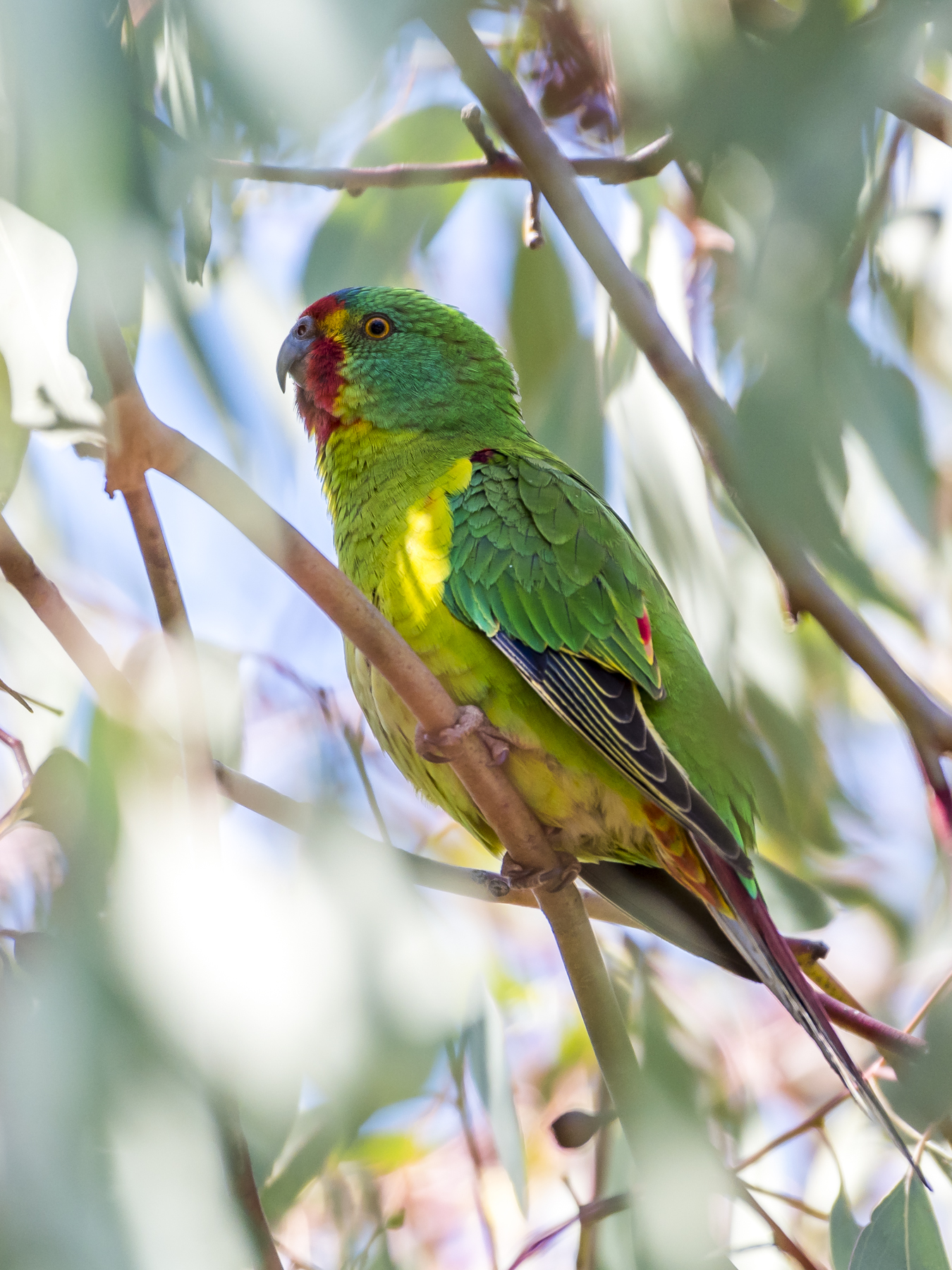
Swift parrot. Image credit: Gunjan Pandey, Creative Commons
In the southern mountains of the ecoregion, the magnificent mountain ash (E. regnans) form iconic forest of giant trees with giant fern understories. The mountain ash is the tallest flowering plant species, reaching up to at least 132 m. Species-rich shrublands, shrubby woodlands (heaths), and associated sandplain vegetation occur along the coast. In one of the endemic plant hotspots, the Border Ranges, 1,200 species of vascular plants occur with over 70 endemic plant species.
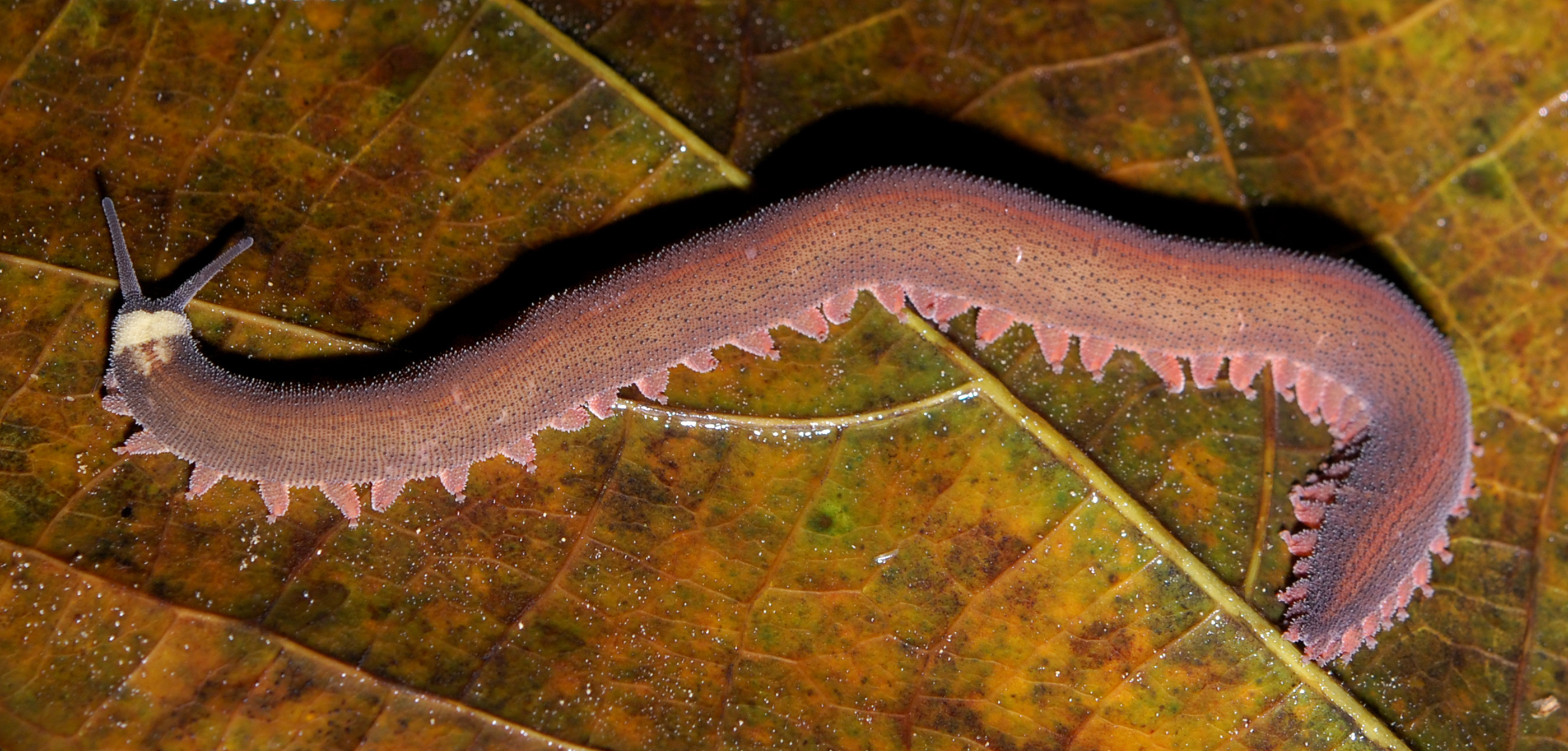
Velvet worm. Image credit: Geoff Gallice, Creative Commons
Two rare primitive trees, the dwarf mountain pine (Pherosphaera fitzgeraldii) and the Wollemi pine hail from dinosaur forests and have survived in protected, moist ravines in a few places. Other relict and rare species have found refuge in the stable, wetter microclimates of Eastern Australia while the continent periodically became drier. Some threatened vertebrates include the red goshawk (Erythrotriorchis radiatus NT), swift parrot (Lathamus discolor CR), regent honeyeater (Anthochaera phrygia CR), brush-tailed rock-wallaby (Petrogale penicillata VU), the stuttering frog (Mixophyes ballbus VU), and broad-headed snake (Hoplocephalus bungaroides VU). Koala (Phascolarctos cinereus) occur in the eucalypt forests.
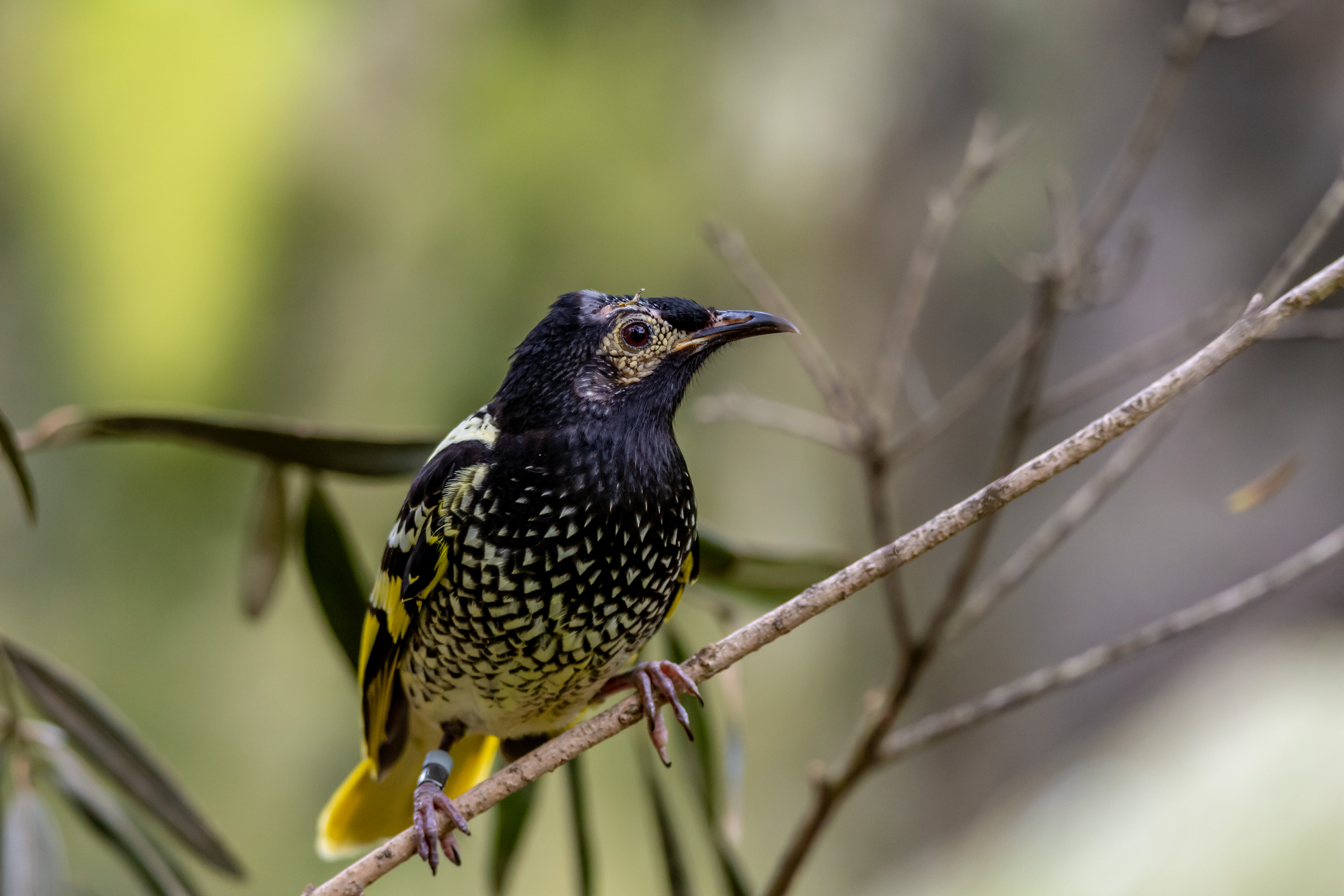
Regent honeyeater. Image credit: Creative Commons
Logging of native eucalypt forests, coastal development, and intense and widespread bushfires driven by global heating pose major threats to the ecoregion. The 2019–2020 bushfire outbreak as of early January 2020 has burned over 107,000 km2 of the ecoregion. Large areas of natural habitat and much wildlife is feared lost, some threatened species possibly extinct. Prior to these fires around 45% of the native vegetation had been cleared.
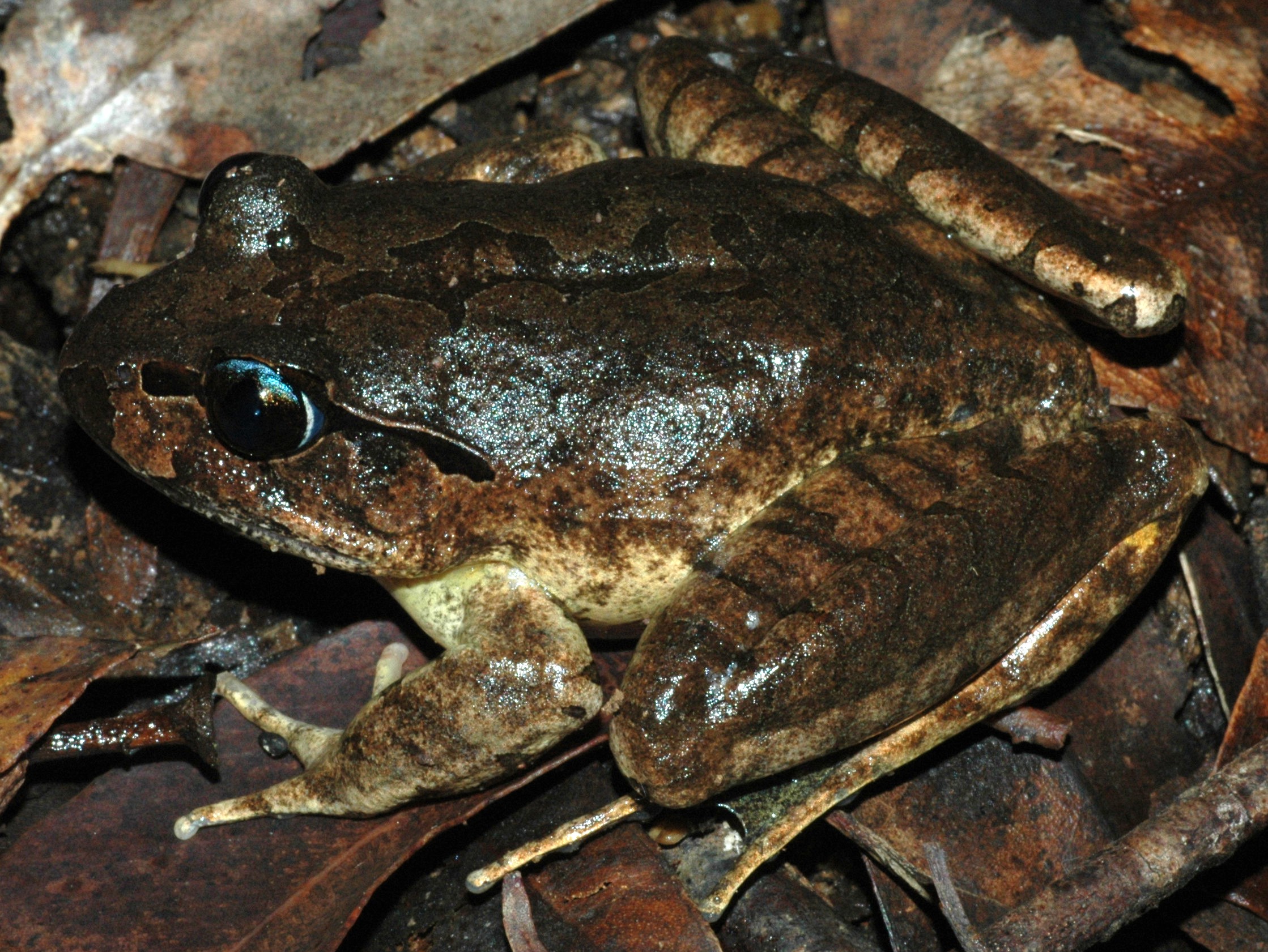
Stuttering frog. Image credit: Creative Commons
Roughly 50% of coolibah-black box (Eucalyptus coolabahand and Eucalyptus largiflorens) has been lost since the arrival of Europeans. Invasive weeds smother native vegetation and limit tree growth. Introduced predators, such as feral cats, kill native wildlife species. Over 50 protected areas, including Blue Mountains National Park, Border Ranges National Park, and Willi Willi National Park have been established.
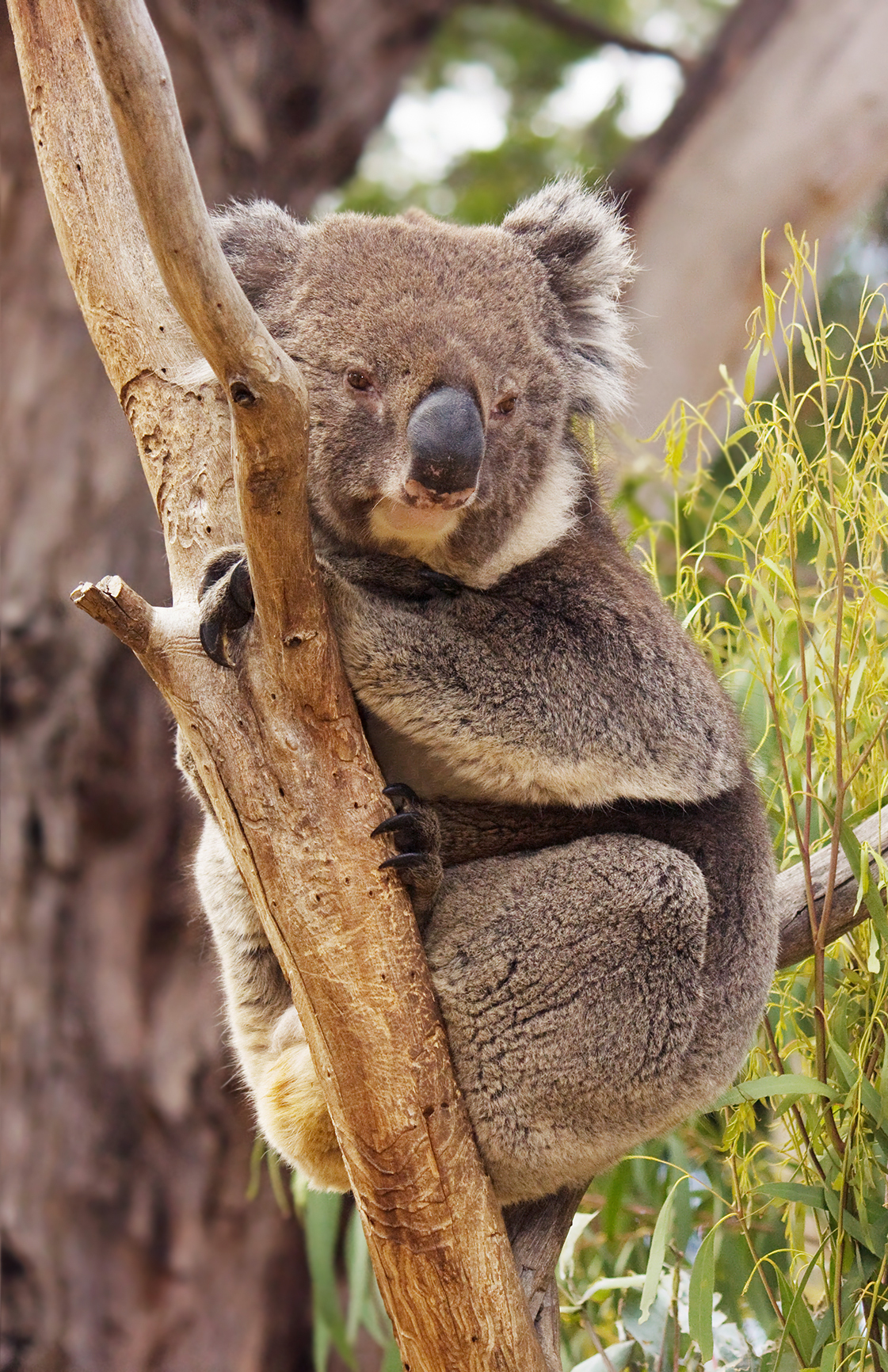
Koala. Image credit: JJ Harrison, Creative Commons
The key conservation actions for the next decade are to: 1) develop and implement a strategy to diminish the impact of more frequent and intense bushfires projected for the future; 2) protect paddock trees that provide linkages within the landscapes for wildlife; 3) purchase high quality remnants for conservation and encourage uptake of conservation agreements on private land; and 4) limit grazing when native ground cover is in flower or seed.
Citations
- Floyd, A.G. 1990a. Australian Rainforests in New South Wales. Volume 1. Surrey Beatty & Sons, Chipping Norton, Australia.
- Glanznig, A. 1995. Native vegetation clearance, habitat loss, and biodiversity decline: an overview of recent native vegetation clearance in Australia and its implications for biodiversity. Biodiversity Series, Paper No.6. Biodiversity Unit, Department of the Environment, Sport, and Territories, Canberra, Australia.
- Ashton, D.H. and P.M. Attiwill. 1994. Tall open-forests. Pages 157 – 196 in R.H. Groves, editor. Australian Vegetation. Cambridge University Press, Cambridge, United Kingdom.
